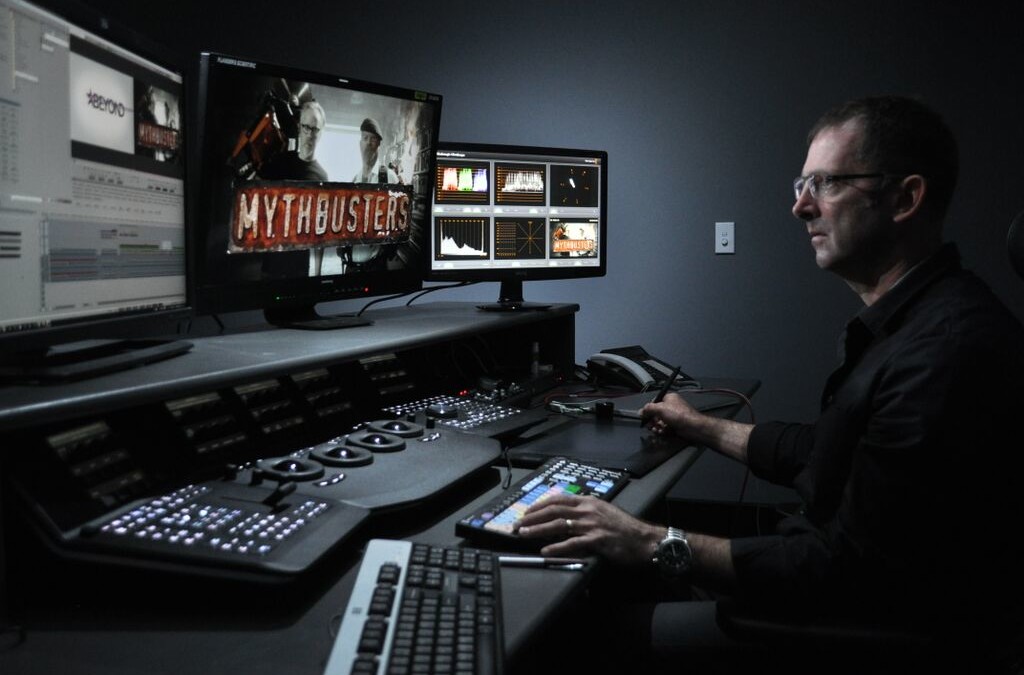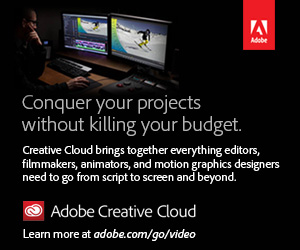Fremont, CA – October 14, 2015 – Blackmagic Design today announced that Sydney, Australia based Beyond Productions is using DaVinci Resolve Studio to support its post production workflow for new virtual reality (VR) content for Discovery Channel’s hit television show “MythBusters.”
Beginning with August’s ‘MythBusters vs. Jaws’ episode, Beyond is delivering VR experiences to accompany upcoming episodes throughout the rest of the season, including mail truck explosions, a zombie attack and a rocket launch, among others. The VR content is available via Discovery’s VR smartphone apps for iOS and Android, as well as on a new dedicated Discovery VR website http://www.discoveryvr.com/.

“We had been doing our own research into VR and found that Discovery was also doing their own R&D, and they were keen to get content,” said Anthony Toy, Director of Post Production, Beyond Productions.
Filming for the VR footage began the second week of May with “MythBusters” Shark Week episode.
“The first thing we filmed was underwater shark footage,” said Ambar Sidhwani, Junior Editor and Virtual Reality Editor at MythBusters. “But regardless of where we shoot the footage, we either use a six or seven camera rig, shoot static or point of view (POV), 360 by 180 degrees field of view, 4:3 aspect ratio and at 80 fps, which helps us sync the footage later in post.”
Once the footage is brought into post, it’s run through stitching software for syncing, calibration, stabilization and exposure compensation, and as Anthony explained, ”It’s like putting a puzzle together of which camera angle goes where to make a canvas. The end result is 4096 x 2048 MP4 file, 4K, 2:1 aspect ratio, 80 fps. High resolution and high frame rate are very important for VR, and we found that many post systems couldn’t handle resolution or did weird things to the frame rate. Luckily for us, our Senior Online Editor Michael Graham suggested DaVinci Resolve Studio.”

“Resolve being resolution independent was a must as the frame size of the final stitched image does not conform to any conventional formats such as HD, 2K, 4K, UHD, etc.,” said Michael. “To have the flexibility to work in the native resolution of the stitched image meant no blanking was introduced to the final output, which would affect the way the image wraps around to create the VR 360 degree image.”
Ambar added, “Resolve’s biggest advantage is that it deals with aspect ratio and frame rate natively. There is no encoding files to other files with different frame rates. 80 fps is great up to delivery, but the final platforms, such as phones, won’t play 80p materials, so the final file is delivered in 30p. Resolve does frame to frame conversions and makes file longer, so the motions in the footage are smooth at the end of that conversion process.”
According to Ambar, this is essential in the virtual world, as people can get sick from sudden jerks. “The smooth motion helps makes the VR experience more immersive and does not make people motion sick, which is key to the experience,” he said.
DaVinci Resolve Studio is also used to grade the footage, and as Anthony noted, grading is done on a computer monitor. “We don’t get video output at that resolution because it’s not a broadcast standard, so we grade on a computer monitor. The included scopes in Resolve are great and very helpful in keeping us within the guidelines,” he said.
The stitching software balances across all the cameras to allow for a smoother stitch, and it tries to retain as much detail as possible, sometimes resulting in a flat looking image. However, the Beyond team wants a vibrant, punchy and strong look as the final platforms for the images are VR rigs or smartphone screens.
“The flat image pops up a few hurdles that the tools and power of Resolve help to overcome,” explained Michael. “The original footage is from a compressed 8-bit source so adding saturation and contrast to the image really brings out the compression artifacts and banding. A combination of working in a 32-bit environment in Resolve, the de-noise filter and other elements of the software allow us to push the image a lot further and really work it to achieve the look we are after without having the image looked too processed.”
He continued: “A tool we use not only on VR, but also on our other programs to help us achieve great results is the array of curves in Resolve. It’s a very powerful tool allowing amazing freedom to create and manipulate the images with such ease and allowing us to make an even and vibrant look in the VR world we are manipulating.
“For VR, we use Resolve not only as a grading tool but as our complete finishing tool,” concluded Michael. “The new tools and timeline in Resolve allow us to edit, grade, bring in VFX and other elements to add and enhance the VR experience all within a resolution independent 32-bit in environment.”
About Blackmagic Design
Blackmagic Design creates the world’s highest quality video editing products, digital film cameras, color correctors, video converters, video monitoring, routers, live production switchers, disk recorders, waveform monitors and real time film scanners for the feature film, post production and television broadcast industries. Blackmagic Design’s DeckLink capture cards launched a revolution in quality and affordability in post production, while the company’s Emmy™ award winning DaVinci color correction products have dominated the television and film industry since 1984. Blackmagic Design continues ground breaking innovations including 6G-SDI and 12G-SDI products and stereoscopic 3D and Ultra HD workflows. Founded by world leading post production editors and engineers, Blackmagic Design has offices in the USA, UK, Japan, Singapore and Australia. For more information, please go to www.blackmagicdesign.com.
About Beyond
Beyond International Limited is a leading international media and content business which is listed on the Australian Stock Exchange (ASX BYI). Since its establishment in 1984 the company has produced over five thousand hours of television programs for broadcast across the world including MythBusters, Beyond Tomorrow, Taboo, Deadly Women and Selling Houses Australia. With offices in the USA, Australia and the UK, Beyond Productions has always been a leader in implementing new acquisition and post production technologies including HD, file based acquisition and delivery and UHD (4K) production. Beyond’s virtual reality (VR) expertise is now delivering stand alone content as well as VR experiences for its television series, such as MythBusters.






